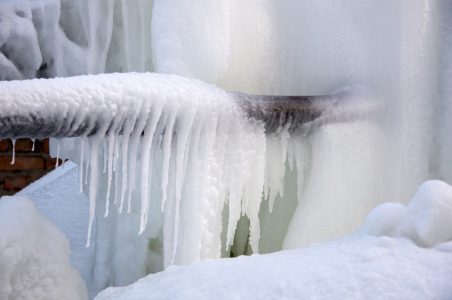Tips to Defend Plumbing System from Freezing: Critical Advice
Tips to Defend Plumbing System from Freezing: Critical Advice
Blog Article
What're your opinions on How To Avoid Freezing Pipes?

Winter can wreak havoc on your pipes, specifically by freezing pipes. Here's exactly how to avoid it from taking place and what to do if it does.
Intro
As temperatures decrease, the threat of icy pipelines rises, possibly leading to costly repairs and water damage. Understanding exactly how to avoid frozen pipelines is essential for property owners in cool climates.
Understanding Frozen Pipes
What creates pipelines to ice up?
Pipelines ice up when exposed to temperature levels listed below 32 ° F (0 ° C) for expanded durations. As water inside the pipelines ices up, it expands, taxing the pipeline walls and potentially triggering them to rupture.
Threats and problems
Frozen pipelines can result in supply of water disturbances, property damage, and expensive fixings. Ruptured pipelines can flooding homes and create substantial architectural damage.
Signs of Frozen Water Lines
Recognizing icy pipes early can prevent them from bursting.
Exactly how to determine frozen pipes
Search for decreased water flow from faucets, uncommon smells or sounds from pipes, and noticeable frost on subjected pipes.
Prevention Tips
Insulating susceptible pipes
Wrap pipelines in insulation sleeves or utilize heat tape to protect them from freezing temperature levels. Focus on pipelines in unheated or outside locations of the home.
Heating methods
Maintain indoor rooms properly heated, specifically areas with pipes. Open cupboard doors to allow cozy air to distribute around pipes under sinks.
Protecting Outdoor Pipes
Yard hose pipes and outdoor taps
Disconnect and drain garden tubes prior to wintertime. Set up frost-proof spigots or cover outside taps with insulated caps.
What to Do If Your Pipes Freeze
Immediate actions to take
If you presume icy pipelines, maintain faucets available to relieve stress as the ice thaws. Make use of a hairdryer or towels taken in warm water to thaw pipes slowly.
Long-Term Solutions
Structural changes
Take into consideration rerouting pipelines away from exterior wall surfaces or unheated locations. Add extra insulation to attic rooms, basements, and crawl spaces.
Upgrading insulation
Buy top notch insulation for pipes, attic rooms, and walls. Proper insulation assists maintain regular temperatures and reduces the danger of icy pipes.
Verdict
Stopping icy pipes calls for proactive procedures and quick reactions. By recognizing the causes, indications, and safety nets, property owners can protect their plumbing throughout cold weather.
6 Proven Ways to Prevent Frozen Pipes and Protect Your Home
Disconnect and Drain Garden Hoses
Before winter arrives, start by disconnecting your garden hoses and draining any remaining water. Close the shut-off valves that supply outdoor hose bibs and leave the outdoor faucet open to allow any residual water to drain. For extra protection, consider using faucet covers throughout the colder months. It’s also important to drain water from any sprinkler supply lines following the manufacturer’s directions.
Insulate Exposed Pipes
Insulating your pipes is an effective way to prevent freezing. Pipe insulation is readily available at home improvement stores and is relatively inexpensive. Pay close attention to pipes in unheated areas such as the attic, basement, crawl spaces, or garage. Apply foam insulation generously to create a buffer against the cold. You can also wrap your pipes in heat tape or thermostat-controlled heat cables for added warmth.
Seal Air Leaks
Inspect your home for any cracks or openings that could let in cold air. Seal any holes around the piping in interior or exterior walls, as well as the sill plates where your home rests on its foundation. Additionally, make sure to keep your garage door closed unless you’re entering or exiting. Leaving it open creates a significant air leak that can lead to frozen pipes.
Allow Warm Air Circulation
During cold snaps, it’s essential to allow warm air to circulate evenly throughout your home. Leave interior doors ajar to promote better airflow. Open kitchen and bathroom cabinets to help distribute heat consistently around the rooms. If you have small children or pets, be sure to remove any household chemicals or potentially harmful cleaners from open cabinets for safety.
Let Faucets Drip
A small trickle of water can make a big difference in preventing ice formation inside your pipes. When temperatures drop significantly, start a drip of water from all faucets served by exposed pipes. This continuous flow helps prevent the water from freezing. Additionally, running a few faucets slightly can relieve pressure inside the pipes, reducing the chances of a rupture if the water inside does freeze.
https://choateshvac.com/6-proven-ways-to-prevent-frozen-pipes-and-protect-your-home/

Do you appreciate reading about Helpful Tips to Prevent Frozen Pipes this Winter? Try leaving a comment down the page. We would be happy to hear your reactions about this piece. We are looking forward that you come back again later on. Liked our piece? Please quickly share it. Help another person find it. Many thanks for being here. Come back soon.
Start Now Report this page